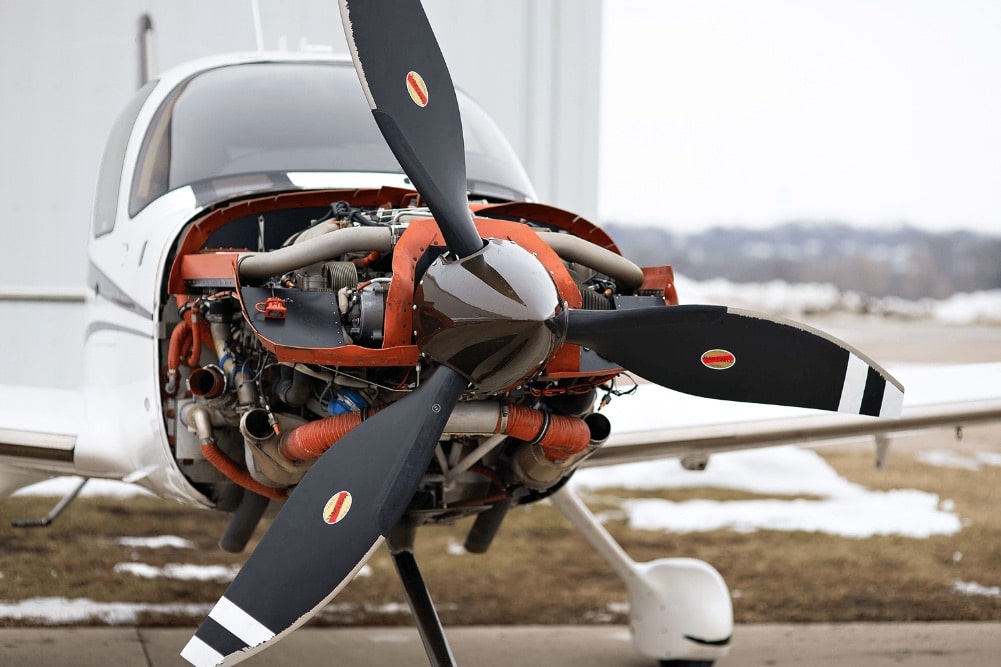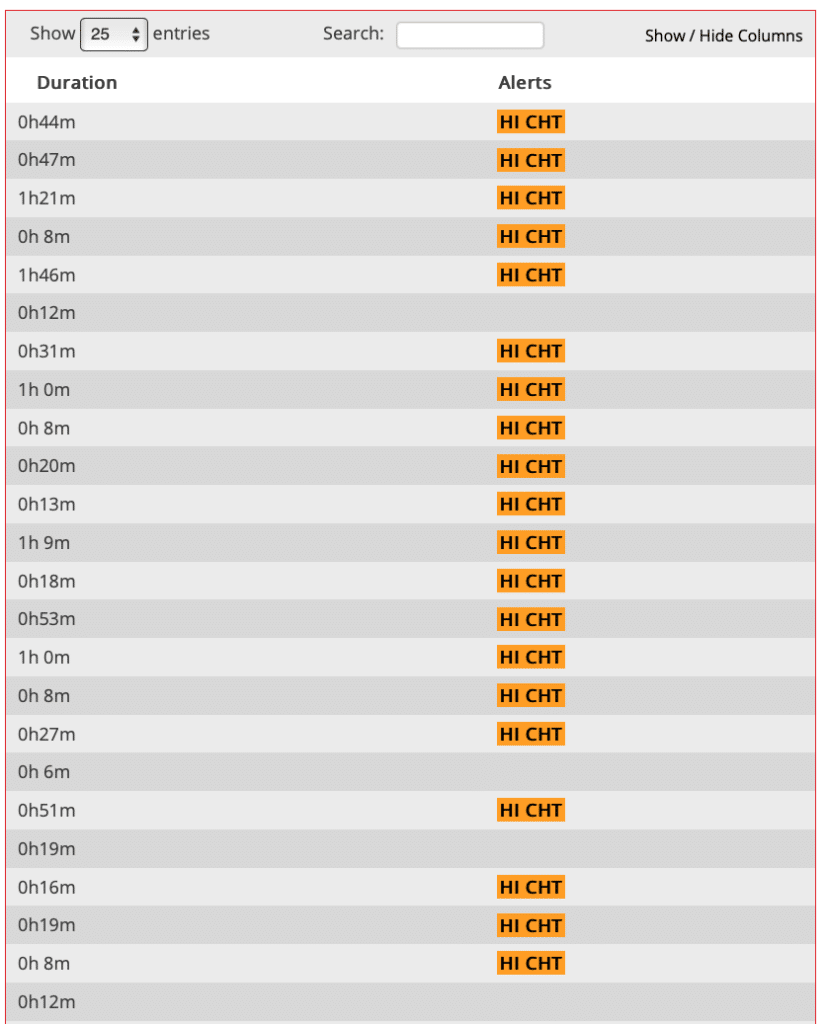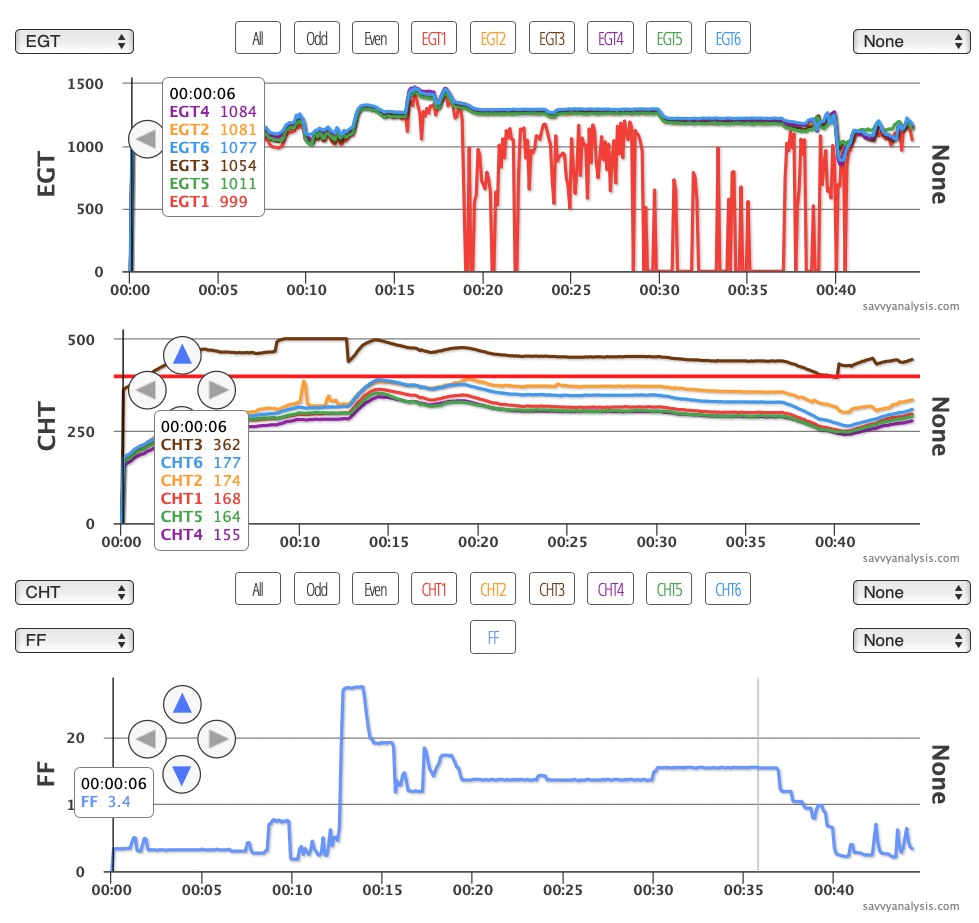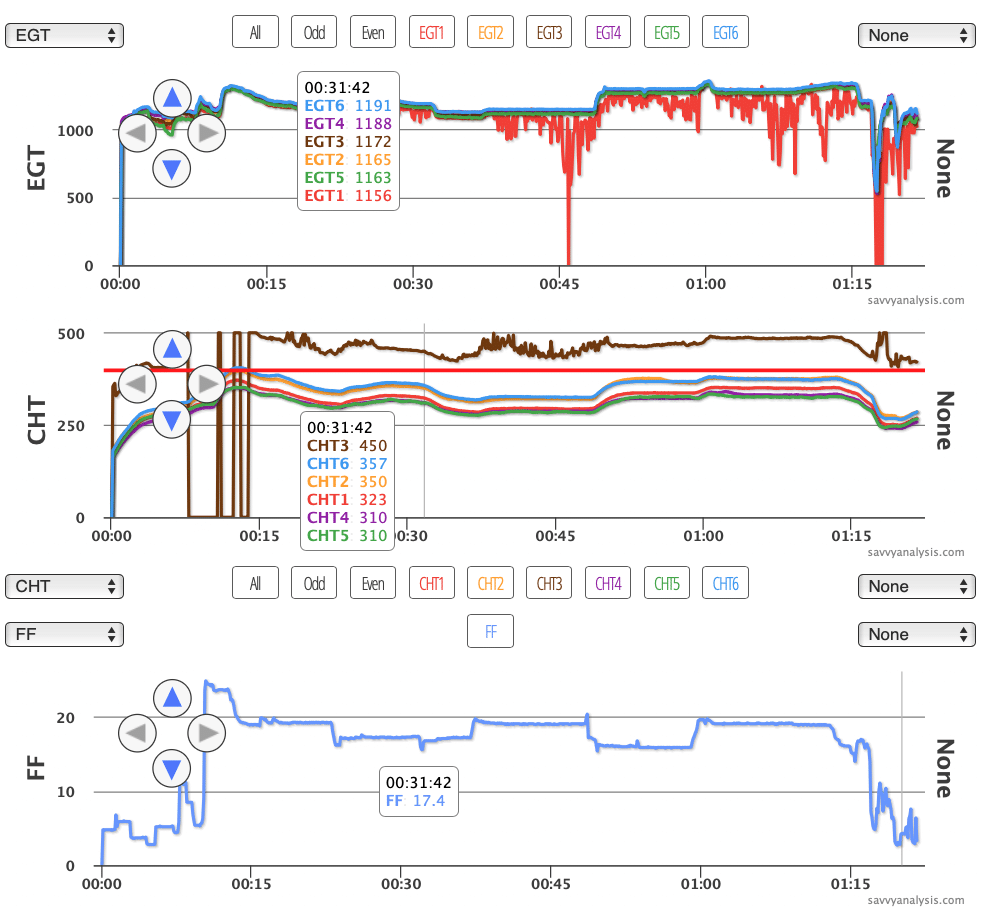
Greg loved the Piper Comanche that he had owned and flown for the past 16 years. But now he was facing a costly engine major overhaul, and the avionics were in serious need of an upgrade. Greg used his aircraft for business and dispatch reliability was very important to him. He knew that if he went ahead with the engine and avionics work, the Comanche would be out of service for several months. So, he explored selling the Comanche and acquiring a pre-owned Cirrus SR22.
He found a 2005 model in his price range and enrolled in Savvy’s national prebuy management service (SavvyPrebuy) to guide him through the prebuy examination of the Cirrus. Al Hawthorne, one of Savvy’s most experienced Cirrus experts, was assigned to Greg’s case. Greg and Al agreed on a shop near the seller’s home base—but not the shop that had been maintaining the airplane. One of the first things Al asked the prebuy shop to do was to upload the data from the Cirrus’ Avidyne Entegra MFD. That’s when Savvy’s team of data analysts went to work.
High CHTs?
The first thing Savvy’s analyst noticed on the list of uploaded flights was that nearly every flight in the list had triggered the “HI CHT” alert.

Both Continental and Lycoming have established a CHT redline—generally 460ºF for Continentals and 500ºF for Lycomings—but Savvy considers those to be emergency-only temperature limits that are much too high. We prefer to set the “HI CHT” alert threshold to a more reasonable number. If the threshold is set too high, then it will alert only for catastrophic events like pre-ignition, but if it’s set too low, it’ll alert on every flight. The best choice for the alert threshold is one that alerts you only when something’s out of the ordinary.
Once we looked at the data from the Cirrus in question, it became obvious why it was alerting so much, even with the alert set at Continental’s redline of 460ºF. Take a look at this flight, for example:

The #1 EGT (red trace) started to go crazy about 15 minutes into the flight—obviously a failing EGT probe. And the #3 CHT (brown trace) was up above 400ºF immediately after engine start—defying the basic laws of physics, so obviously bad data.
Bad data like this isn’t necessarily a deal-killer. If we were doing a pre-annual-inspection analysis for a SavvyMx or SavvyAnalysis Pro client, we could work around the two unusable sensors and still calculate GAMI spread and evaluate the health of the ignition system (for all but the #1 cylinder). But it would sure be better to have all the sensors working.
Inadequate Maintenance?
In the case of analysis for Greg’s Cirrus prebuy, these failed probes tell us something that might be more valuable than the engine data they would have displayed if working properly. They tell us about the seller and his approach to maintenance—and his willingness to continue to fly an airplane with critical sensors that he must have known were failed.
Airplanes are often on the selling block because of financial difficulties, so during prebuy we’re always on the lookout for evidence of inappropriately deferred maintenance. In this case, it was just a couple of failed probes, but it sure makes you wonder what else might have been left undone.
Here’s another flight from the same Cirrus that occurred earlier in the year and shows this problem of two bad sensors had been around for months:

The SavvyAnalysis team of analysts perform engine monitor data analysis for clients of all four of Savvy’s services—SavvyBasics, SavvyMx, SavvyQA, and SavvyAnalysis. Our emphasis is a little different for each service. For SavvyMx managed maintenance, for example, the analysts assist the A&P/IA account managers by evaluating mixture distribution, analyzing ignition system health, and comparing important parameters such as fuel flow, RPM and bus voltage to standard values. For SavvyAnalysis Pro we report that information to the client. For SavvyBreakdown, we determine if the downloaded data can help diagnose the issue causing the AOG.
For SavvyPrebuy (such as Greg’s), we’re focused primarily on identifying any showstoppers that would materially influence the market value of the airplane and/or our client’s decision whether to buy or walk away. We look for things like long periods of disuse, excessively high CHTs, and erratic readings or unexpected values indicating inadequate maintenance.
It was the latter (inadequate maintenance) that concerned us most in the case of Greg’s Cirrus prebuy. Greg and Al conferred and decided to pass on this particular SR22, and Greg began looking for another purchase candidate. This one seemed like it might turn out to be a lemon, and walking away seemed like the smart move.
ngine monitor data has become an important part of every Savvy-managed prebuy examination. It’s forensic evidence of how the airplane has been operated, and can also offer clues about maintenance. Even bad data can tell a story to a prospective buyer.
If you’re the seller, flight data that substantiates or confirms regular flights (no prolonged gaps in service) and good powerplant management can add value to a plane.
When we first launched SavvyAnalysis in 2013, we knew we would be able to help owners diagnose clogged injectors, fouled spark plugs and other maintenance items. As we gathered more data, we developed report cards and trend analysis reports and failing exhaust valve analytics. Now, we’re using data analysis to support our prebuy and breakdown assistance programs, too.
How can SavvyAnalysis help you? Click here to learn more.
You bought a plane to fly it, not stress over maintenance.
At Savvy Aviation, we believe you shouldn’t have to navigate the complexities of aircraft maintenance alone. And you definitely shouldn’t be surprised when your shop’s invoice arrives.
Savvy Aviation isn’t a maintenance shop – we empower you with the knowledge and expert consultation you need to be in control of your own maintenance events – so your shop takes directives (not gives them). Whatever your maintenance needs, Savvy has a perfect plan for you: